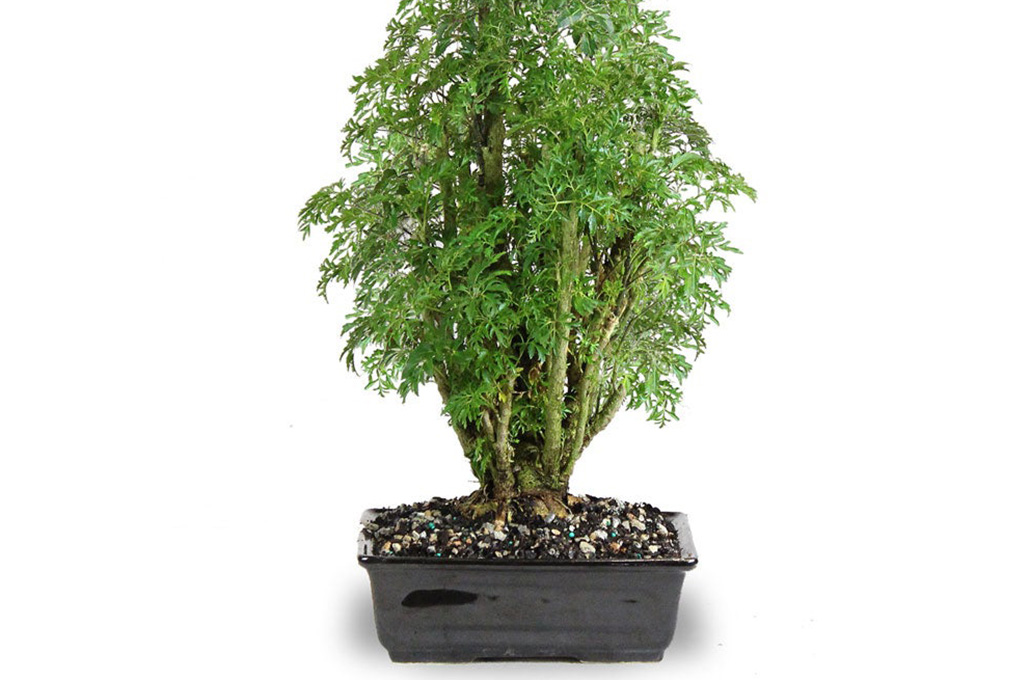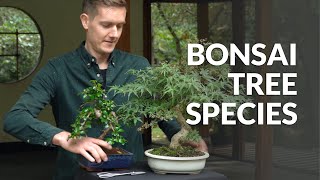Aralia Bonsai Care guidelines
The Polyscias tree needs temperatures above 62°F / 17°C (in winter it tolerates a few degrees less) but doesn't like much direct sunlight, instead it prefers light shade or partial shade. When it is kept in the house the pinnate aralia can even be placed at a window facing east or north. In any case the tree must be protected from strong midday sun. After a change of location the pinnate aralia can react with yellowing leaves.
The pinnate aralia bonsai tree should be kept slightly moist and its roots must not dry out completely. Water as soon as the soil starts to get dry. On the other hand excess wetness must be avoided. Polyscias trees prefer pH values between 6 and 7.5, but are sensitive to overly calcareous water. Continue reading about watering Bonsai trees.
Watering
Free lecture from the Beginners CourseUse a liquid fertilizer every two weeks during the growing season. Stop fertilizing during the darker and cooler winter time.
Prune regularly to maintain the shape and shorten the shoot tips repeatedly during the growing season. Leaves that are too large can be cut away. If larger branches are removed keep in mind that the Polyscias doesn't sprout easily from old wood. Pinnate aralias should not be wired. If you try, do it with utmost care because the bark of the aralia is very soft and extremely sensitive to pressure and the old wood is brittle. As the plant grows very straight naturally, upright styles or broomstyle are the best suited shapes. Continue reading about pruning Bonsai trees.
Repot every two years in early spring or in September-October with normal root pruning. Older bonsai are repotted every 3 - 5 years. Use a well-draining standard soil mixture. Continue reading about repotting Bonsai trees.
The pinnate aralia can be propagated by cuttings and air-layering. The cuttings need a temperature between 50°F – 68°F / 20°C - 30°C to root.
The Polyscias bonsai tree is often bothered by aphids, scale, thrips or spider mites. Use a specific pesticide and try to improve the growing conditions for your tree or ask a professional gardener for help in difficult cases. For more detailed information on these techniques, check out our Bonsai tree care section.

Pinnate Aralia Bonsai (Ming aralia, Polyscias)
General information about the Aralia Bonsai tree
The alternate pinnate or bipinnate leaves, often clustered at the end of the branches have an aromatic smell. The flowers are whitish or greenish occurring in terminal panicles, and the spherical dark purple berry-like fruits are popular with birds. The drupes are cylindrical or laterally flattened and contain one seed each. The bark is beige and smooth on younger plants and can get a bit rougher with age. Pinnate aralias are popular ornamental trees or shrubs in tropical regions and are also widespread as potted houseplants around the world.
Among the most popular species for bonsai are the Ming aralia (Polyscias fruticosa) and the fern-leaf aralia (Polyscias filicifolia). All Polyscias species are tropical plants, need warm temperatures and cannot endure frost.
If you need help identifying your tree, take a look at our Bonsai tree identification guide.

